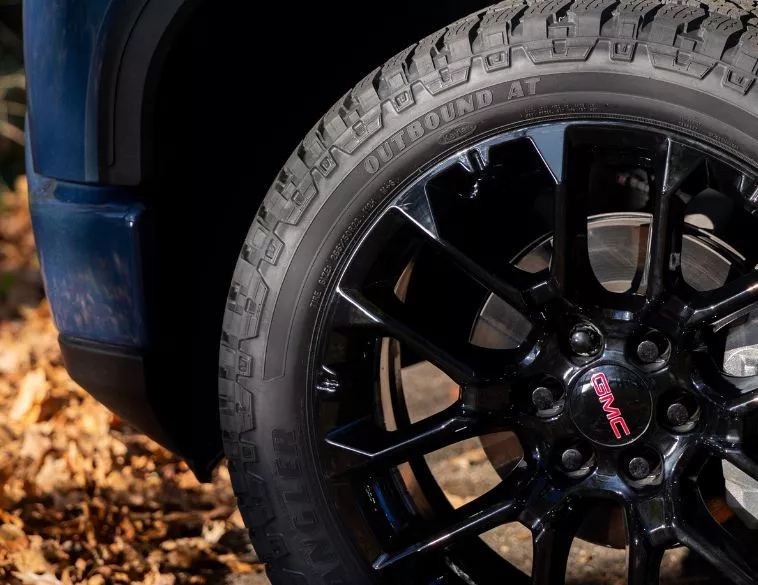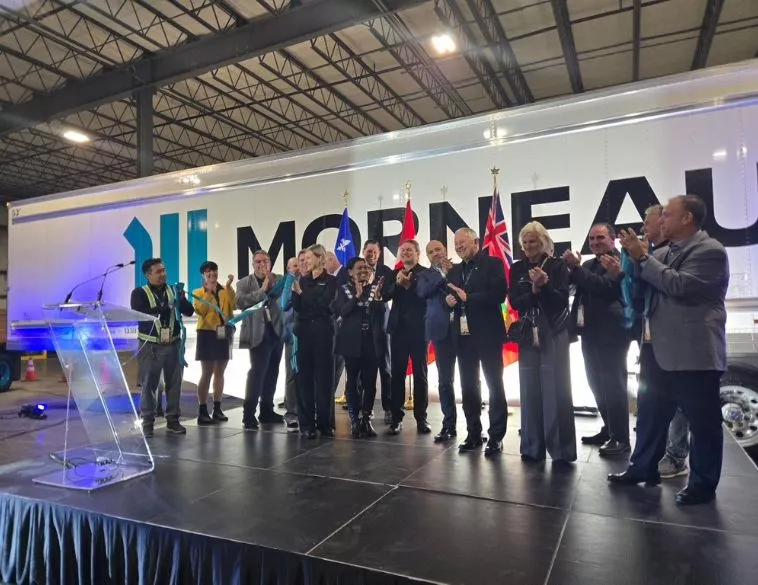Practical Fleet Sustainability
An Interview with Geotab’s Charlotte Argue
At the Geotab Connect 2025 Conference, a key theme was Pragmatic Sustainability. While the concept appears highly enticing, in practice, it can seem difficult to navigate and translate into meaningful and long-term results. When you add the current pressures and operating environments facing many fleets today, the process can seem see even more challenging. Yet, when properly planned and executed, fleets have seen very meaningful results. Geotab recently published its fourth annual Sustainability and Impact Report which highlights just how beneficial practical sustainability practices can be. Recently, Fleet & Mobility had the opportunity to chat with Charlotte Argue, Senior Manager for Sustainable Mobility at Geotab to talk about practical sustainability and some of the strategies and tactics fleets can use to achieve real sustainability goals, while at the same time advancing their business in terms of longevity and profitability.
Autosphere: What do you think is key to delivering practical, real-world sustainability for fleets today?
Charlotte Argue: While it is important for organizations to set far reaching sustainability goals, a key aspect in making these objectives achievable is by taking those aspirational goals and turning them into tangible steps in the short term. By taking this approach, fleets can often deliver a more immediate impact and cost savings. If we look at the pressures that many operators face today, and the tasks they need to perform, taking a data driven approach and embedding that into the fleet manager’s role with actionable steps is critical. The other aspect to consider is that the approach is truly data driven and caters that specific fleet. Some considerations are— the type of fleet, the size of that fleet, the types of vehicles it operates and what those operational demands really are. Taking this approach will help the fleet focus on the true opportunity for sustainability, instead of trying to create a broad plan that might not necessarily make sense for their specific operations and needs. The third piece here, is ensuring that the sustainability plan is economically viable. It will require some upfront investment, but fleets need to understand that those investments will translate into overall cost savings and fleet operational efficiency. When this type of approach is taken, it makes it much easier to build a business case for committing to sustainability over the longer term.
AS: Can you tell us how data is playing a critical role in shaping the decisions modern fleets make when it comes to sustainability?
CA: If we think about the options for fleets today in adopting more sustainable practices, there are a range of tools and solutions they can use. Nevertheless, it’s important to let the data inform where they should focus. And, as previously stated, this will look different for every fleet. Data plays an important role, and to begin with, fleets will need to have a baseline and that starts with the operational footprint of the vehicles currently in use. We often hear the old adage that “you can't measure what you don't measure.” So, as a fleet manager you first need to ask questions such as what is the overall fleet fuel consumption, what distance are those vehicles traveling, what percentage of the fleet is idling and for how long; how efficient the routes on which vehicles operate are, and what the vehicle maintenance schedules are.
Obtaining that data to understand where the biggest improvement opportunities are—can be hugely beneficial. Secondly, once you know where those biggest efficiency opportunities lie, you can then leverage your fleet data and software to implement action in those areas. Then, based on what has been learned, fleets can then apply tools to target those areas. For example, maybe there are opportunities for improved driver behaviour. Leverage in-cab feedback for those drivers that are known for idling or speeding and tie these factors back to your overall sustainability goals. Thirdly, measure the impact. For example, if I’m a fleet operator and I’ve invested in a new program that targets driver behaviour, I should be using data to track how well this solution or program is having an impact. If it is, great, if not then there’s an opportunity to pivot and try doing things differently. Ultimately, though, you need to have the data in order to make these decisions.
AS: In terms of costs and efficiency, what are some things to consider to ensure sustainability can be implemented and integrated long-term into a fleet’s overall strategy and operations?
CA: When you’re talking about long-term success of these sustainability plans, it is really important to align both environmental and operational efficiency goals, so that they're tied. There's also a real opportunity to tie sustainability into other areas of operational business priorities, such as productivity, optimization and safety. Wherever possible, tie those in with other business objectives, so that it's more comprehensive of a plan, and from there, set clear and measurable goals with associated key performance indicators (KPIs) that translate into specific actionable and measurable metrics. If, for example, a fleet organization might have a goal for a certain percentage of improvement in overall fuel economy or overall emissions, they can take those overarching goals and have metrics that are actionable on a daily basis. So instead of trying to reduce emissions by 20%, maybe reduce idling time by 15% in the next quarter, or increase EV adoption by X percent annually. Setting those metrics will really help to embed those metrics into actions you can take today. Specifically looking at long term viability, finding the low hanging fruit and early successes where you can hit those targets and generate costing savings is going to build success. This will then enable you to further sustainability efforts, as well as embed the business case and the organizational buy-in, into your overall sustainability plan. When Geotab works with fleets, we like to talk about a phased-in approach. Start small, with pilot projects and with the areas of opportunity within your fleet operations where you will be successful. Pilot projects are good in that they allow you to start small and generate valuable insights and feedback, enabling you to implement change where needed so you can begin the process of scaling up when the organization is ready. When it comes to financial viability, total cost of ownership is an important consideration. Not only do you need to think about the return on investment, but the long-term value that your sustainability strategy is going to ultimately bring back to the organization. This can include cost savings, but also tangential benefits, so thinking about employee satisfaction and retention, or your customers’ responses to your programs, or increased overall organizational resiliency, is going to be very important. It can be harder to put a solid cost line to that, but overall, you should be thinking about total cost ownership and the overarching business case. Furthermore, this all needs to be tied into understanding the long-term objectives of your business and identifying where those value adds are going to be, related to those objectives. You also need to ensure you’re bringing along stakeholders and employees, since in order to be successful, pragmatic sustainability can’t be instigated top down or via a single department—you really need to have buy-in across the entire organization.
AS: In terms of harnessing and leveraging telematics data, what are some of the ways fleets can do this efficiently and effectively so they can consistently access the information theys need, when they need it?
CA: There’s a popular misconception that all organizations need is more data, but that’s not the case. In reality, it’s not about the amount of data, but having the right information, in the right format and bringing it to the right people at the right time. What the data is and how it's delivered is going to be different depending on the stakeholder within the organization. You’re going to need to present this data in multiple ways through different channels to ensure it gets through to the decision makers. If we think about someone in a CEO position for example, or a director of sustainability, the data they're going to need will be different from the data an operator might require such as vehicle information in real time. For example, an operator might need to know whether they are utilizing the most efficient routes or ways in which drivers can improve their behaviour or skills to be more efficient. Even though the data itself might be different, depending on the recipient, the building blocks are similar. You're going to need some time related data and you’re also going to need GPS data, so you can track where your assets are, where they are coming from and where they are going. You’re also going to need financial data, which is part of your vehicle operations. There are also different ways in which you can bring this information in. It can be brought in via a visualization format such as a report or dashboard. It can be brought in as alerts and notifications in real time, and it can be brought in and tied into your other systems. Often, fleets might have information within various dashboards that’s also tied to other systems or software. A good example is fuel card software, where you can create a process where everything is integrated and seamlessly brought into a single place as it relates to fleet management—essentially having it available through a single pane of glass. Again, it depends on who you are within the organization and what decisions you're making, and whether the information comes via a dashboard, or via email. One trend we’re seeing today is that it is getting a lot easier for people to interact with their data information, so you no longer need to be a software engineer or a data scientist to understand what's important, and this is particularly true with tools such as generative AI. Geotab Ace is a good example of this. You can ask the platform what's important, and it'll figure out what it needs to do in the back end and give you the answer based on your own fleet’s status. This takes away some of the complexity, automating processes and making it faster and easier for fleet managers to make informed decisions.
AS: If applicable, can you share some examples where Geotab’s approach to sustainability goals for its customers has achieved real world benefits?
CA: While we have results from many case studies from our customers, if we look at some high-level trends, across all our customers, we saw a 2.6% improvement in fuel efficiency year over year as of 2024. While that might seem small, if you actually add up how much fuel that is, it represents a huge amount and a lot of emissions reductions. Furthermore, when we looked at the cohort of customers who are using our Sustainability Solutions specifically compared to those customers that aren’t, those that do, are, on average, 6.3% more efficient than those who aren't. Looking at a couple of specific organizations, California Freight didn’t know how much fuel was being wasted by idling vehicles. They identified idling as one of their priority areas, and they ended up getting a 59% reduction in costs related to idling, saving around $60,000 a month. California Freight achieved this by installing auxiliary power units for the vehicles that needed them; adding new driver training, and automated reports so that they can keep track of these changes. The combination of all these efforts saw, saw huge improvements. Another example is DB Regio, a bus fleet company in Germany. They were able to cut emissions by 1400 metric tons and saved thousands of litres of diesel fuel annually through smarter fleet operations. DB Regio optimized routes, improved field performance and driver behaviour and brought in more strategic maintenance. All of this resulted in huge savings.
AS: As we move forward, and with the business and logistical environment evolving, what are some things to consider for fleets when it comes to harnessing data to drive cost savings and sustainability practices?
CA: For fleets that are just getting started it can seem a little intimidating, but if I would offer one recommendation, it would be to start with your baseline. If you’re not currently collecting data off your vehicles, then you should start there. Get your basic GPS tracking in place and make sure you’re collecting things like fuel use, vehicle usage, and then build from there. Once you start tracking the data, then it’s time to find those areas of opportunity and remember, start small, with a pilot program. Find those successes before you start to scale. Ultimately, making sure it becomes a habit to utilize data for decisions is key. Know who the decision makers are, identify what decisions they're making, and wherever possible, bring in metrics to those decisions, and then tie those metrics and those decisions with your vehicle and fleet targets. This allows you to align your sustainability goals with measurable actions and enables the creation of a strong data driven decision making culture within the organization.







